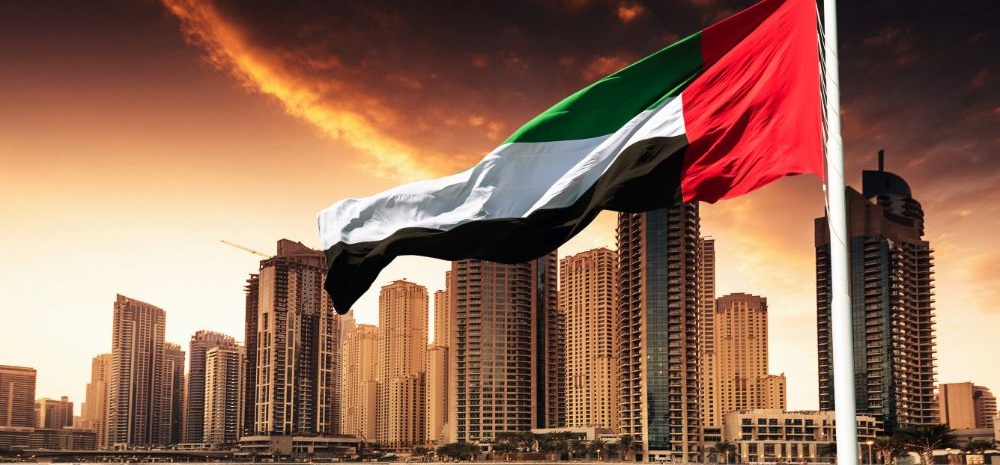Etihad Rail: Transforming Transportation in the UAE
Monday, 3 March 2025
Etihad Rail (Arabic: الاتحاد للقطارات) is the developer and operator of the United Arab Emirates’ national railway network. Established in June 2009 under Federal Law No. 2, the project aims to connect the UAE’s key ports and industrial hubs while integrating with the broader Gulf Cooperation Council (GCC) railway network.
Table of Contents
- A Vision for Economic Growth
- Phased Development and Operations
- First Look: A Glimpse into the Future
- Future Developments and Passenger Services
- International Expansion: The Hafeet Rail Project
- The Passenger Train: Fast, Efficient, and Sustainable
- Network
- Freight Services
- The Impact of Etihad Rail on the UAE and Beyond
- Frequently asked questions
A Vision for Economic Growth
Etihad Rail is a critical component of the Abu Dhabi Economic Vision 2030 and the UAE Vision 2021. The railway network contributes to economic diversification and fosters socio-economic development through strategic infrastructure projects.
Phased Development and Operations

Stage One: The Beginning of Operations
Stage One of the Etihad Rail network, spanning 264 km (164 mi), became operational in January 2016. This phase connected the inland gas fields of Liwa and Shah to the port town of Ruwais, facilitating the transportation of granulated sulfur. The operations for this stage were managed by Etihad Rail DB, a joint venture between Etihad Rail and Deutsche Bahn, Europe’s largest railway operator.
Stage Two: Expanding the Network
Construction of Stage Two, covering 605 km (376 mi) from Ghuweifat on the Saudi border to Fujairah on the UAE’s eastern coast, began in 2020. The first track was laid in early 2021, and Stage Two officially opened on February 28, 2023. This phase significantly expanded the railway’s reach, bringing the total network to 900 km.
First Look: A Glimpse into the Future
The first look of the Etihad Rail passenger train was unveiled in January 2022, showcasing a sleek and futuristic design. The train’s silver and grey carriages prominently feature the Etihad Rail logo, representing modernity and innovation.
The interior has been designed with passenger comfort in mind, offering:
- Different seating arrangements catering to different travel classes
- Spacious cabins with ample legroom
- Wi-Fi connectivity throughout the journey
- Charging stations for electronic devices
- Entertainment systems to keep travellers engaged
- Diverse food and beverage options onboard
Future Developments and Passenger Services

As of 2024, Etihad Rail primarily operates freight services, with no scheduled passenger services or a confirmed timeline for their commencement. However, the railway network is expected to play a crucial role in future passenger transportation across the UAE and the wider GCC region.
International Expansion: The Hafeet Rail Project
In April 2024, Etihad Rail and Oman Rail announced a new joint venture, Hafeet Rail, to construct a 300 km (190 mi) railway linking Abu Dhabi’s Etihad Rail network with the port of Sohar in Oman, passing through Al Ain. This expansion aims to enhance trade and connectivity between the two nations.
The Passenger Train: Fast, Efficient, and Sustainable
One of the most exciting developments in UAE’s transportation network is the fast electric passenger train that will connect Abu Dhabi and Dubai in just 30 minutes. With a maximum speed of 350 km/h, the train will pass through major landmarks, making travel between the two emirates quicker and more convenient than ever before. train will have a capacity of over 400 passengers, offering various classes including first, business, and economy. Amenities on board will feature infotainment systems, charging stations, and comfortable seating arrangements.
The train will have six stations along its route, strategically located at:
- Reem Island
- Yas Island
- Saadiyat Island
- Zayed Airport
- Near Al Maktoum Airport
- Jaddaf (near Dubai Creek)
In addition to this high-speed Abu Dhabi-Dubai route, Etihad Rail’s broader passenger network will feature four major stations in Abu Dhabi, Dubai, Sharjah, and Fujairah, with plans to connect 11 cities and regions across the UAE. While the full-scale passenger service is yet to have an official launch date, anticipation is already high for this game-changing transportation system.

Network

The Etihad Rail network spans approximately 900 kilometers, linking key centers of trade, industry, and population across the UAE. It extends from the border of Saudi Arabia to the Sultanate of Oman, forming an integral part of the planned GCC railway network. The network is built to international standards, ensuring safety and efficiency in both freight and passenger services.
Key Stations
The network will connect 11 cities and regions across the UAE, including:
- Al Sila
- Ruwais
- Al Mirfa
- Abu Dhabi
- Dubai
- Sharjah
- Al Dhaid
- Fujairah
The first passenger station is planned in Sakamkam, Fujairah, with another near the University City of Sharjah.
Freight Services

Etihad Rail has been operating freight services since 2016, initially transporting granulated sulfur from Shah and Habshan to Ruwais. The expanded network now facilitates freight operations across the UAE, with a fleet of 38 locomotives and over 1,000 wagons capable of carrying various goods. By 2030, the network aims to transport up to 60 million tonnes of cargo annually, offering a cost-effective and environmentally friendly alternative to road transport.
The Impact of Etihad Rail on the UAE and Beyond
Etihad Rail is set to transform the UAE’s transportation landscape, bringing significant geopolitical, political, environmental, social, and economic benefits. As a key infrastructure project, its impact extends beyond just efficient transport—it will shape the region’s connectivity, sustainability, and economic growth for decades to come.
Geopolitical Impact
Etihad Rail is designed to strengthen transportation links between the UAE and its Gulf Cooperation Council (GCC) neighbors. Stage Two of the project is planned to connect the UAE to Saudi Arabia, supporting regional trade and movement. However, delays in rail developments across other GCC nations—partially due to the failed Khaleeji currency and past diplomatic tensions—have slowed full integration. Nevertheless, the project remains a cornerstone of regional connectivity, positioning the UAE as a leader in rail infrastructure.
Political Influence
The development of Etihad Rail has also highlighted the UAE’s evolving political landscape. A senior fellow at the Middle East Institute noted that the project has faced challenges due to the sovereignty maintained by individual emirates. This reflects the broader shift towards national centralization of political power, as the UAE continues to balance federal governance with regional autonomy.
Environmental Sustainability
Etihad Rail is a game-changer for sustainability in the UAE. Rail freight transportation is significantly more eco-friendly than road transport. Each fully loaded freight train on Stage One can replace about 300 trucks, reducing CO₂ emissions by 70-80%. Over time, the railway network is projected to cut greenhouse gas emissions by 2.2 million tonnes annually—the equivalent of removing up to 375,000 vehicles from UAE roads.
Beyond emissions reduction, the railway will lower trade costs, enhance industry competitiveness, and contribute to long-term economic diversification. The total environmental benefits—including emissions savings and the transition of freight and passenger movement from roads to rail—are estimated to be worth AED 24 billion over the next 50 years.
Social Benefits
By connecting rural areas with major cities, Etihad Rail will improve accessibility and economic opportunities for remote communities. The time saved for road users shifting to rail is projected to be worth AED 10 billion over 40 years. Additionally, enhanced rail transport will reduce road congestion, leading to an estimated reduction of 670 crashes and 52 fatalities annually. This decrease in traffic accidents is expected to generate social benefits totaling AED 20 billion over four decades.
Economic Growth and Development
The economic impact of Etihad Rail is immense, with total projected benefits amounting to AED 186 billion over 40 years. The railway will lower transportation costs, improve efficiency, and boost the tourism sector, which alone is expected to generate AED 21 billion in revenue.
Rail freight offers cost-effective transport options for various cargo types, providing businesses with competitive logistics solutions. Additionally, the infrastructure surrounding railway stations is expected to drive urban development, increasing land values and generating AED 23 billion from residential, commercial, and industrial leasing over the next five decades.
Another significant economic advantage is reduced road maintenance costs. With fewer freight and passenger vehicles relying on roads, the UAE is projected to save AED 7 billion in road repair expenses over the next 40 years.
Etihad Rail is more than just a transport project—it is a catalyst for regional connectivity, sustainability, and economic diversification. By integrating the UAE’s major cities and rural areas, reducing environmental impact, and fostering economic growth, the railway is set to reshape the nation’s infrastructure for generations to come. With significant benefits across multiple sectors, Etihad Rail is poised to become a pillar of the UAE’s vision for a sustainable and interconnected future.
Frequently Asked Questions (FAQs)
What is Etihad Rail and what is its purpose?
Etihad Rail is the UAE’s national railway network, designed to enhance transportation across the country by connecting key cities, industrial hubs, and ports. It aims to provide efficient, sustainable, and cost-effective freight and passenger transport, reducing road congestion and boosting economic growth.
Which cities and regions will Etihad Rail connect?
Etihad Rail will connect major cities and regions in the UAE, including Abu Dhabi, Dubai, Sharjah, Fujairah, Al Ain, and Ruwais. The network is also planned to link with Saudi Arabia, strengthening trade and travel within the Gulf region.
How will Etihad Rail benefit the environment?
Etihad Rail will significantly reduce carbon emissions by shifting freight and passenger transport from roads to rail. Each freight train can replace up to 300 trucks, cutting CO₂ emissions by 70-80% and removing the equivalent of 375,000 vehicles from roads annually.
When will passenger services on Etihad Rail begin?
Passenger services are expected to launch in the near future, with trains capable of traveling at speeds of up to 200 km/h. Once operational, travel time between Abu Dhabi and Dubai is expected to be just 57 minutes, providing a fast and convenient transport option.
How will Etihad Rail impact the UAE’s economy?
Etihad Rail is projected to generate AED 186 billion in economic benefits over 40 years by lowering transport costs, reducing road maintenance expenses, increasing tourism revenue, and boosting trade efficiency. It will also stimulate real estate and industrial development around railway stations.





